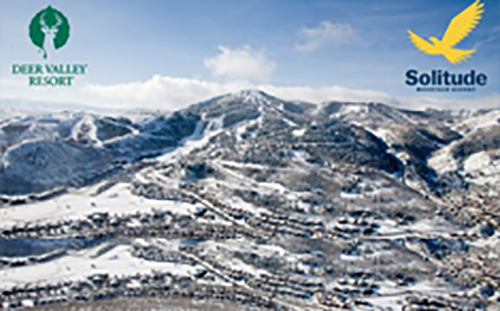History
The first revelations of precious metals within the mountains around Salt Lake City appeared within the early decade. Commissioned military officer, St. Patrick E. Connor of the Union, instigated the search, emboldening his men to prospect with the aim of bringing non-Mormons into the Beehive State Territory. It is recorded that the Park City Mining District was the claim to fame 1869. Clearly by the decennium, population increase in this space had commenced, perpetuated by the invention of an outsized vein of silver ore in what would become the Ontario Mine. In its peak, it had been mentally conceived as the best mine within the world.
In 1872, Saint George Snyder and his family arrived within the mountain vale. Awed by the plush grasses and blazing wildflowers he christened the realm, Park City, for it's a authentic beauty. Prospectors found that silver verified to be abundant and dozens of mines within the Park City Mining District actively received shipments by the 1880's. The Daly company and Anchor company were two of the primary major businesses doing well and even the national monetary panic of 1893 had little impact.
The mining boom of Park City brought many prospectors into the realm. They traveled to camps on the hillsides proximate to the mines, bringing with them sundry religions and ethnic traditions. Between 1870 and 1900, Park City's population multiplied by forty percent. Originally, the city consisted of boarding homes, mills, stores, saloons, prostitute "cribs", theaters and mine buildings. However, by the 1880's, several prospectors had either sent for their families or were traveling with them and they focused on building homes and establishing colleges. The primary facility in Park City was St. Mary's Faculty operated by the Sisters of the Parish of St. Madonna of the Notion. City officers conjointly organized hygienic committees and established a dihydrogen monoxide system, phone accommodation and chartered a hearth company.
A number of significant fires prevailed throughout Park City's history. Engineered primarily of picket structures, the city's most catastrophic fire emerged in 1898. Ravine winds distributed the flames of an early morning fireplace. Within seven hours, three-quarters of the city had burned, inflicting over one million dollars in injuries and damage. The blaze was the biggest in the Beehive State's history. It left Main Street in ruins and only a few walls remained of the two hundred businesses, houses and dwellings. Within the residents' haste to reconstruct their city, they once again built structures in areas that would leave them susceptible to future fires.
By the turn of the century, Park City mines had lured many miners from all over, many from Scotland, Ireland and Scandinavia, because their mines were already so depleted after years of heavy operation. Social standing was dictated by one's economic holdings, vocation, ethnicity, spiritual affiliation and membership in fraternal organizations. In Park City, prosperity was relished by few, but yearned for by many. Fortunes were made and lost, ultimately making millionaires of twenty-three men and women.
The mining trade had an enormous impact on the economy of Utah and accounted for seventy eight percent of the state's total exports in 1882. In 1925 the Park Consolidated company, fashioned by merging Park City Mining and Smelting Company, with the Park Beehive State and therefore the Ontario Silver company. The budding company discovered an astronomically immense body of ore, and by 1928 emerged because the biggest amount of single silver gave rise in the United States.
For a brief period, during World War I the mines lost quite a bit of labor. Scattered strikes persisted and the economy faced peril and was then weakened by the Depression. Oddly, the increased demand for metals throughout World War II minimized the suffering of Park City's mines. However, by the 1950's, fewer than two hundred men worked within the mines and Park City became distinguished as a "ghost city."
During the twentieth century, Park City renovated into a recreation facility. The Park City Ski space was opened and now the historical mines bring in many tourists. In a 1990 poll, Park City Ski space was ranked second among North American ski resorts. Although the mines are no more, they brought a gift of over 5 million dollars in silver, gold, lead and zinc by the 1960's.



